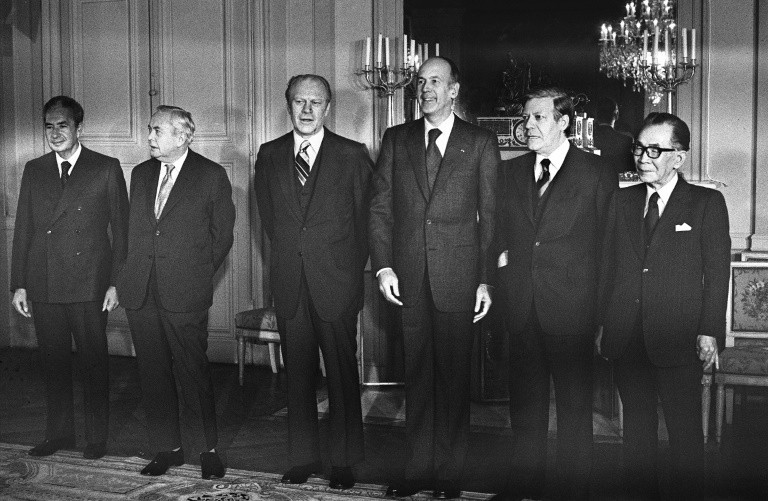
Moro seen with Harold Wilson, Gerald Ford, Valery Giscard d'Estaing, Helmut Schmidt and Takeo Miki at a meeting in France in 1975 of leading industralised nations (Photo: AFP)
While Great Britain reels from the nerve agent attack on former spy Sergei Skripal that echoes the espionage brinkmanship of the Cold War, on Thursday Italy remembers its highest-profile victim of the ideological battle between East and West.
On March 16, 1978, two-time former prime minister Aldo Moro was ambushed in Rome by far-left Red Brigades terrorists while on his way to the Italian parliament to participate in a confidence vote on a new government led by fellow former centre-right Christian Democrat (DC) premier Giulio Andreotti.
The Red Brigades killed Moro's five police bodyguards and fled with the DC leader, taking him to a hideout where he would be tried by a "people's court" composed of his kidnappers.
Found guilty of being the architect of the "historic compromise" that led to the Italian Communist Party (PCI) lending support to Andreotti's government, and failing to get imprisoned terrorists released, the Red Brigades murdered Moro.
On May 9, after 55 days of captivity his body was found, riddled with bullets, in the boot of a car parked equidistantly between the headquarters of the DC and PCI in the centre of Rome.
- Italy's 9/11 -
"It was Italy's 11th of September," wrote Ezio Mauro, editor of daily La Repubblica, on Wednesday.
"These are places that still seem to speak about what happened ... Every day, I pass by the area and I can not help but think about the spring of 1978 and an Italy that was exhausted by a terrible decade."
Moro's kidnap and murder was the apogee of the "years of lead", a period from the end of the 1960s to the start of the 1980s that was characterised by a surge in political violence.
Between the Piazza Fontana bombing in 1969 that killed 17 and the Bologna massacre, a bomb outside the city's train station in 1980 that killed 85, hundreds of attacks and murders were carried out, and the Red Brigades were one of the deadliest groups.
"Since 1975, the Red Brigades had opted for a strategy of front-on struggle against the Italian state," says historian Philippe Foro, author of "The Moro Affair."
However, the murky details surrounding Moro's murder have never been fully cleared up, and within Italy a whole host of theories have sprung up as to why he was targeted.
- Cold War mystery -
Moro wrote a raft of letters to his family, Andreotti and Pope Paul VI, which urged the release of Red Brigade allies in prison. One, to his wife, read: "my blood will fall on them."
Foro added: "He had also made many opponents among those who condemned his policy of historic compromise with the PCI: within NATO, the Italian secret service, in politics..."
There are many among those who have chronicled the period who believe that not everything was done to find Aldo Moro and release him. And that the Italian state made the choice to "sacrifice" him for the sake of Cold War stability and to keep certain state secrets under wraps.
"For the United States, the power of the Communist Party in the Mediterranean's most important country was unacceptable and the Soviets also saw a threat in the historic compromise," said Ferdinando Imposimato, the judge who presided over the subsequent trial.
While Moro will remain the victim of a bloody political conflict that raged for over a decade and seeped into the 1980s, Culture Minister Dario Franceschini believes that he offers a lesson for a country left in political deadlock.
"He convinced the two winners of an election, neither of which had a majority, to support a government," said Franceschini on Wednesday.
"What was worthwhile for the leaders of yesterday is worthwhile for those of today."


